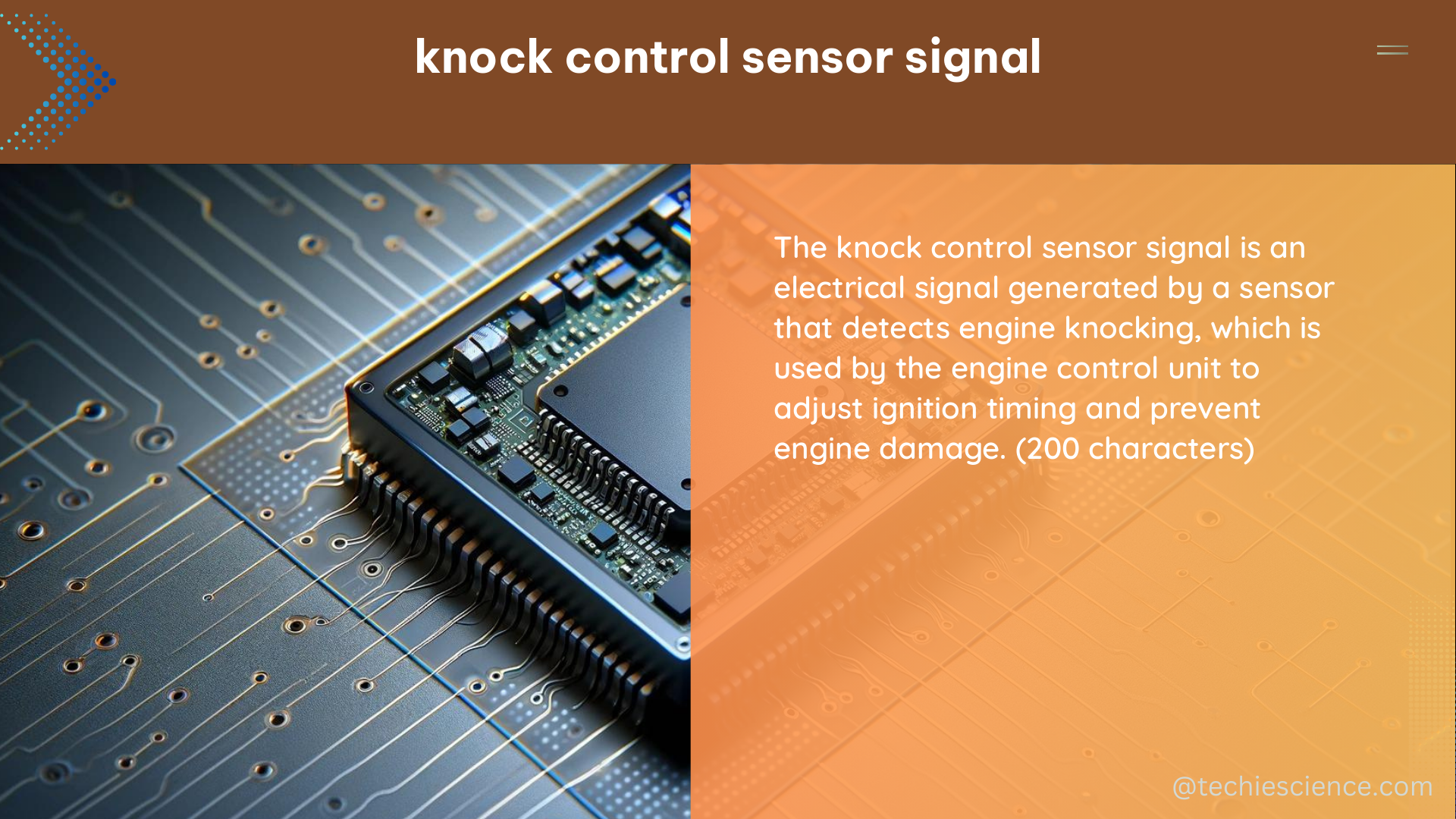The knock control sensor signal is a crucial component in modern internal combustion engines, providing essential information about engine knocking or detonation. This high-frequency signal, typically ranging from 8 to 16 kHz, is measured at the time of each ignition per cylinder and is used by the Engine Control Unit (ECU) to adjust the ignition timing and prevent engine damage.
Understanding the Knock Control Sensor Signal
The knock control sensor is essentially a microphone that detects the high-frequency vibrations generated by knocking. The sensor voltage is a raw signal that must be interpreted by the ECU to determine if knocking has occurred. The amplitude and frequency of the signal are critical in determining the presence of knocking.
Frequency and Amplitude Characteristics
The knock control sensor signal has the following frequency and amplitude characteristics:
- Frequency range: 8 to 16 kHz
- Typical frequency: 12 kHz
- Amplitude: Correlates to the severity of the knock
The ECU monitors the frequency and amplitude of the voltage for specific characteristics that usually indicate knock, determined by the factory and set in hardware and code.
Signal Processing and Timing
The knock control sensor signal is a high-frequency signal that requires sophisticated signal processing techniques to interpret. The ECU must be able to process this signal within 1 millisecond (ms) to prevent engine damage, making it a critical component in modern engine management systems.
Knock Detection and Ignition Timing Adjustment

The ECU uses the knock control sensor signal to detect knocking and adjust the ignition timing accordingly. Knocking occurs when the air-fuel mixture in the cylinder ignites too early, causing a secondary ignition that results in a knocking sound.
Knock Detection Process
The knock detection process involves the following steps:
- The knock control sensor detects the high-frequency vibrations generated by knocking.
- The sensor converts these vibrations into an electrical signal.
- The ECU monitors the frequency and amplitude of the voltage for specific characteristics that indicate knock.
- The ECU determines the severity of the knock based on the signal characteristics.
Ignition Timing Adjustment
Based on the knock detection, the ECU adjusts the ignition timing to prevent engine damage. The adjustments are made as follows:
- A certain frequency, known to be generated by knock, will pull the ignition timing.
- The amplitude of the signal correlates to the severity of the knock, with higher amplitudes indicating more severe knock.
- The ECU uses this information to retard the ignition timing, reducing the likelihood of further knocking.
Importance of the Knock Control Sensor Signal
The knock control sensor signal is a critical component in modern engine management systems. By detecting knocking and adjusting the ignition timing, the ECU can prevent engine damage and optimize engine performance.
Engine Damage Prevention
Knocking can cause severe damage to the engine, including piston and cylinder wall damage, as well as increased wear on other engine components. The knock control sensor signal allows the ECU to detect and mitigate knocking before it can cause significant damage.
Performance Optimization
By adjusting the ignition timing based on the knock control sensor signal, the ECU can optimize engine performance. This allows the engine to operate at the most efficient ignition timing, improving fuel efficiency, power output, and overall engine performance.
Conclusion
The knock control sensor signal is a crucial component in modern internal combustion engines, providing essential information about engine knocking or detonation. By understanding the frequency and amplitude characteristics of this signal, as well as the knock detection and ignition timing adjustment processes, engine management systems can effectively prevent engine damage and optimize engine performance.
References
- NASIOC Forums – Knock Control Sensor Signal
- Audizine Forums – VAG-COM Measurements and Interpretation: Knock Control Group 26
- A new knock event definition for knock detection and control optimization
- A data-driven approach for knock detection and control in spark-ignition engines
- Signal Analysis: Knock Sensor

The lambdageeks.com Core SME Team is a group of experienced subject matter experts from diverse scientific and technical fields including Physics, Chemistry, Technology,Electronics & Electrical Engineering, Automotive, Mechanical Engineering. Our team collaborates to create high-quality, well-researched articles on a wide range of science and technology topics for the lambdageeks.com website.
All Our Senior SME are having more than 7 Years of experience in the respective fields . They are either Working Industry Professionals or assocaited With different Universities. Refer Our Authors Page to get to know About our Core SMEs.